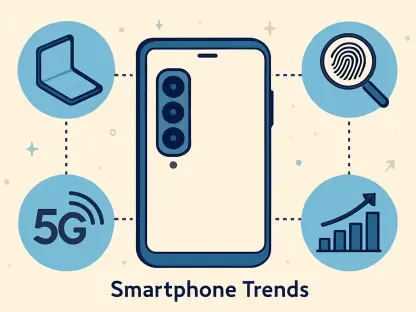Imagine a world where a single touch unlocks not just a smartphone but also bank accounts, personal emails, and even home security systems, all with the unique imprint of a finger, making daily life incredibly seamless. This scenario is no longer a futuristic dream but a daily reality for millions who rely on biometric authentication. Fingerprint readers have become a cornerstone of mobile device security, offering a seamless blend of speed and protection that traditional passwords often lack. Yet, beneath this convenience lies a complex web of risks that cannot be ignored. As technology advances, the use of biometric data raises critical questions about privacy, identity theft, and the permanence of personal information. The allure of effortless access must be weighed against the potential for irreversible breaches, prompting a deeper examination of how secure these systems truly are and whether the benefits outweigh the vulnerabilities they introduce.
The Double-Edged Sword of Biometric Data
Fingerprint security stands out for its user-friendly approach, allowing instant access with a simple press of a finger, a stark contrast to the often cumbersome process of typing passwords. However, this ease comes with a significant caveat: unlike a password that can be reset if compromised, a fingerprint is an unchangeable part of an individual’s identity. If a hacker manages to replicate or steal this data, the repercussions could span across multiple platforms and services, leaving users with no way to “change” their biometric key. While most devices incorporate safeguards like lockout mechanisms after failed attempts, making it difficult for even skilled intruders to gain access, the risk persists. A successful breach could unlock not just a phone but a trove of personal information tied to that fingerprint. This permanence transforms biometric data into a high-stakes asset, demanding robust protection measures to prevent it from becoming a lifelong liability for users who trust these systems.
Exploring Safer Alternatives and Future Trends
As concerns over biometric vulnerabilities grow, tech giants are investing in alternative authentication methods like passkeys and security keys, which aim to enhance safety without relying on personal biological traits. These solutions, championed by major players in the industry, promise a future where login credentials are tied to encrypted tokens rather than irreplaceable data like fingerprints. While this shift offers a compelling layer of security against identity theft, it is not without drawbacks—namely, the dependency on specific ecosystems that could limit access if users switch platforms or services. Nevertheless, such innovations signal a broader trend toward minimizing the risks associated with storing sensitive personal information on devices. Reflecting on past challenges, it has become evident that while fingerprint technology provides strong defenses against casual threats, the potential for severe, long-lasting damage from a breach remains a persistent concern. Moving forward, embracing these emerging tools and weighing their trade-offs will be essential for ensuring safer digital interactions.









